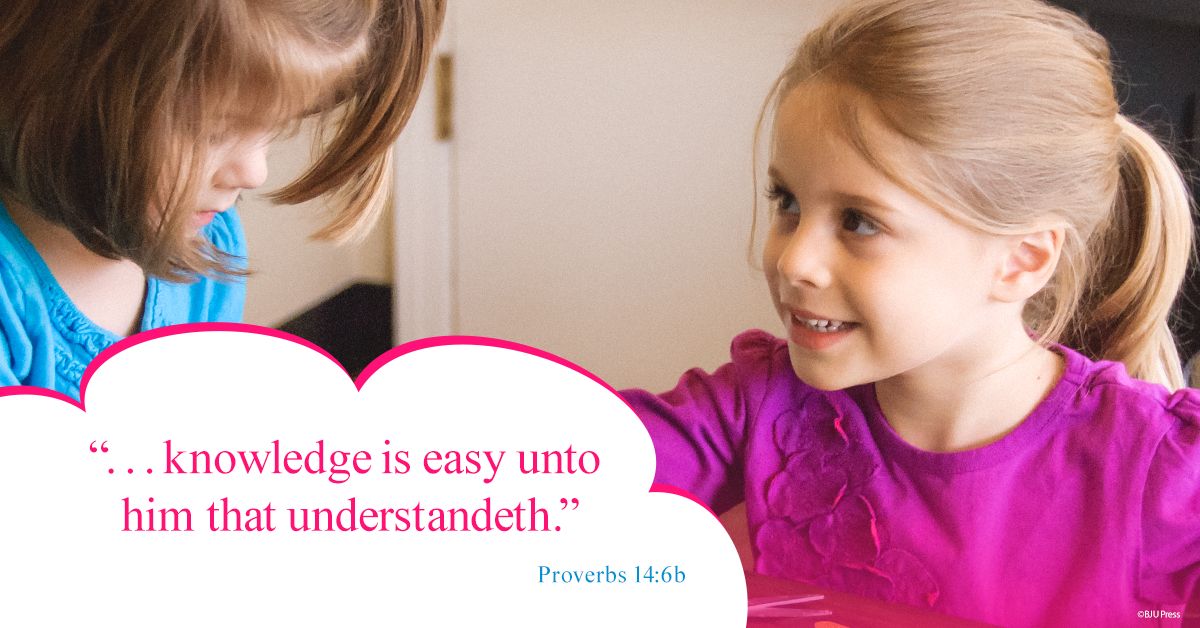
Have you seen that brief animation of the learning process at a government school? I mean the one where a student, who’s sitting upright in a small, traditional desk, moves along a conveyor belt. At the student’s first stop, a robotic arms saws off the top of his cranium, revealing a light bulb. At the next stop, a robotic arm wielding a hammer smashes the lightbulb. And at the final stop, a robotic arm bestows a graduation cap. The process continues on and on with child after child moving through the “educational” process at government schools. This system was not designed for teaching children to take joy in learning.
This animation illustrates a critical fact: educational approaches have impacts on educational outcomes. So what outcome do we want for our children? We want them to think biblically about all of life. We also want them to receive the joy they can expect from their calling. In past blog posts, we’ve explored the scriptural reasons for expecting that our children can have this kind of joy. We’ve also examined reasons why our children’s experiences may be anything but joyful. While some of those reasons relate to factors inside our children, today we want to focus on the factors that we as parents and the educators of our children are responsible for. We need to create educational experiences for our children that most closely conform to how children learn.
When it comes to encouraging learning, I don’t have a comprehensive list of best teaching practices or foolproof methods. I hope to keep learning as my wife and I continue on our homeschool journey. But here are some effective approaches for teaching a joy of learning I’ve learned so far.
1. Teaching Joy with Understanding-Based Learning
Learning that focuses on understanding instead of performance cultivates joy in learning. It can be incredibly satisfying to have a child who performs off the charts on a standardized test or who can recite the Roman emperors’ names from memory. Your child might perform well on paper, but what about his or her understanding? If performance is what we’re aiming for, then we’re not concerned about children’s understanding, just their ability to memorize and regurgitate information. And what we get is children who do well on tests but can’t apply what they’ve learned. Unless they’re also focused on performance, then children who just learn for the grade get bored or frustrated.
Instead, we should be interested in comprehension. When a child understands math, it’s not only easier to learn, but the child has the tools to use math effectively. That’s why breaking out math manipulatives or engaging in other hands-on activities is so powerful. Understanding-based learning is the bridge to higher levels of learning. And Scripture reminds us that “knowledge is easy to him who understandeth” (Proverbs 14:6).
2. Sequenced Learning
Putting learning in the proper order, or sequence, prepares your child for the next step. When children have all the pieces they need for understanding at the time they need them, they’re equipped to find joy in learning. Has someone ever explained something to you, assuming that you already knew something that you didn’t know? Maybe there was important information that you’d never learned. When that happens to me, I get confused and frustrated. I want to stop.
In the kitchen, we wouldn’t ask our children to add three eggs to a mixture until we had taught them how to crack an egg. It’s often easy to approach learning by jumping around from topic to topic without a plan in mind.
With sequenced learning, our goal is to challenge our children without frustrating them. We plan each step carefully so that they have prior experiences and the knowledge they need so that they can take the next step in learning. I love it when my daughter encounters a familiar concept that has added depth and complexity to it. She’s seen it before, but it looks new to her. The new information is more challenging than what she learned before, but it is simple because of her prior experience with the topic.
3. Authentic Learning
Another way of teaching a joy in learning by focusing on the purpose for learning instead of the test. Has your child ever asked, “Will that be on the test?” It’s often an expression of frustration. Instead of taking joy in the experience of learning new things, he or she just wants to know how to pass the class. At that point, your child is probably just overwhelmed by all the extra, seemingly unnecessary information. Children also express this frustration when they ask, “When will I ever use this?”
When we teach our children, we need to regularly show them the real world application of what they’re learning. When learning is relevant to their lives, it becomes real and authentic. They can use math at the grocery story. Or they can apply what they studied in science to make a ramp to move a heavy object. Or take spelling, for example. If we give our children a list of random spelling words to recite back on their test, they’re likely going to get bored or frustrated, and they won’t remember it beyond the test. But when part of their spelling assignment is to proofread someone else’s writing, it’s authentic. They see how spelling is relevant and useful.
When children start to use their learning, they’re exercising good and wise dominion in this world. That is one of the purposes that God has given mankind. And it is the reason we educate our children.
The choices we make in teaching our children will have an incredible impact on how they view learning. If we don’t aim for comprehension, if we teach things out of order, or if we don’t give them a reason for learning, then we won’t be teaching them to have joy in learning. We’ll be crippling their joy of learning, instead. We need to choose teaching methods that support our children. Then we will be able to see the light of joy in our children’s eyes as they’re learning.



